As the sun stretches its rays to embrace a new day, billions of people around the world reach for their favorite morning ritual — a steaming cup of coffee or tea. But have you ever wondered, “Can You Steep Coffee Like Tea?” It may seem like an odd query, but the idea of steeping this cup of joe may open up an entirely new realm of brewing possibilities, infusing our daily routines with renewed zest. This intriguing question paves the way for a fascinating exploration of flavors, techniques, and experiences. Unfurling the layers of this topic, we will delve deep into the art of steeping, probing the depths of your beans and tea leaves to uncover their ultimate potential.
Get ready to immerse yourself in an experimental journey that may very well transform your coffee rituals and enrich your understanding of this age-old brewing method. So, grab your favorite mug, make yourself comfortable, and join us as we embark on this unique exploration into the world of steeping coffee.
Steeping Coffee: Key Takeaway
- Steeping coffee is possible and rewarding: Similar to tea, coffee can be steeped, yielding unique flavors and aromas. Different methods, such as immersion brewing, cold brewing, and pour-over techniques, each create distinctive taste profiles.
- The science of steeping differs between tea and coffee: Steeping extracts the flavors and chemical compounds from coffee and tea. However, the solubility of these compounds differs between the two, leading to variations in the steeping process and the final brew.
- Steeping coffee has several benefits: Steeping can highlight specific flavors and aromas in coffee, increase the antioxidant content, and even reduce acidity, making the beverage smoother and more enjoyable to a wider range of people.
- Tea steeping and coffee steeping can be compared and contrasted: While the two processes share a basic principle, the variety of steeping techniques, the impact of different tea and coffee types, and the potential for flavor extraction offer fascinating comparisons and contrasts.
- Coffee-tea blends open a new world of flavors: Merging the worlds of coffee and tea yields exciting new beverages and dessert recipes. From fusion drinks like Yuenyeung and Dirty Chai Lattes to tea-infused coffees and coffee-tea desserts, these innovative combinations offer a novel way to enjoy and appreciate both coffee and tea.
The Science Behind Steeping Coffee and Tea
Steeping, the process of soaking a substance in water to extract flavors and active ingredients, is a commonly used method in the preparation of coffee and tea. (1) However, understanding the science behind steeping coffee and tea, one realizes there’s more to this simple practice than meets the eye. A veritable ballet of chemistry occurs during steeping, bringing out the unique flavors, aromas, and complexities that we associate with our beloved beverages.
How Steeping Differs Between Coffee and Tea
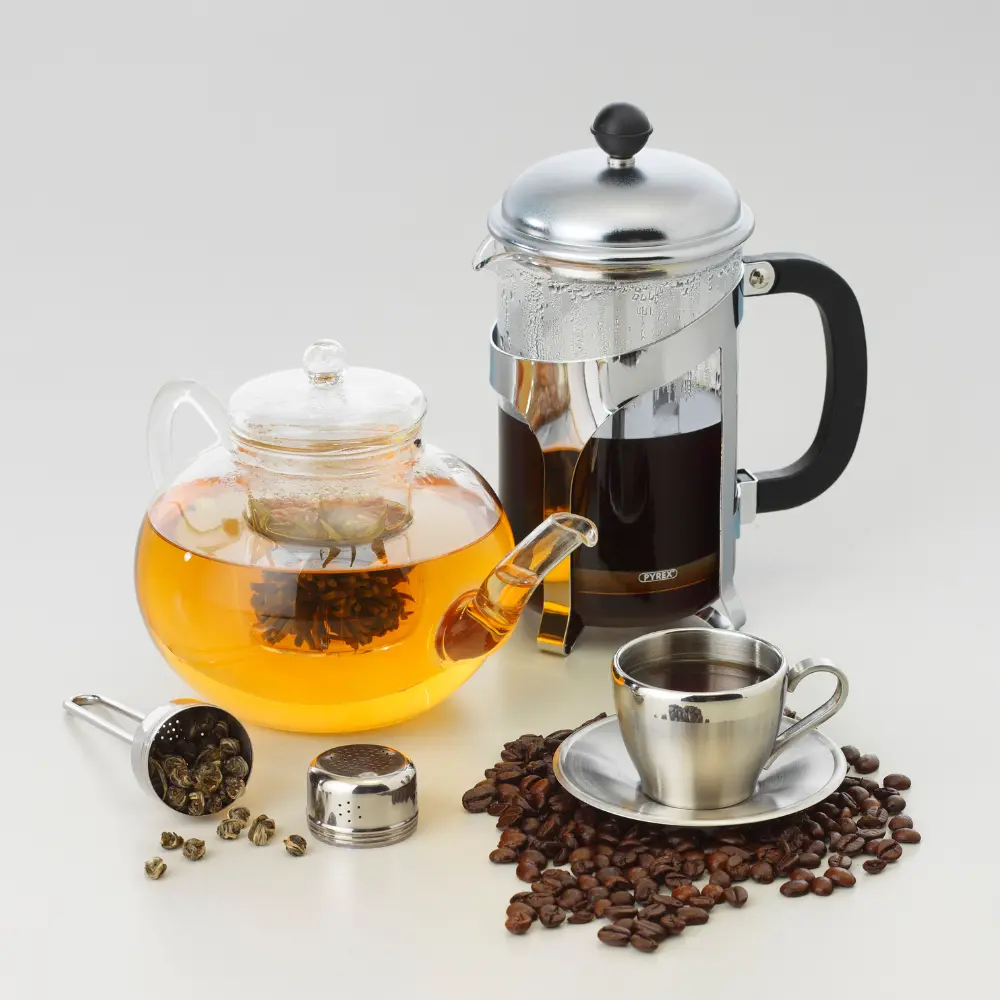
The steeping process differs between coffee and tea due to the inherent properties of their respective ingredients. The primary disparity lies in the duration of steeping.
- Tea: Typically, tea is steeped anywhere from 1 to 5 minutes, depending on the type. For instance, green tea requires less steeping time than black or oolong tea. The longer the tea is steeped, the stronger the flavor and the higher the caffeine content. However, over-steeping can lead to a bitter taste.
- Coffee: This beverage is usually steeped for a shorter duration than tea. This is primarily because the grounds are smaller and more easily saturated, allowing a faster extraction of flavors. Depending on the brewing method, steeping coffee can take as little as 30 seconds (for espresso) to up to 4 minutes (for French press).
The Role of Solubility in Coffee and Tea Steeping
Solubility plays a crucial role in the steeping process of both coffee and tea. It refers to the ability of a substance to dissolve in a liquid. In the context of brewing, the solubility of coffee or tea affects how much flavor, aroma, and caffeine can be extracted into the water.
- Tea Solubility: In general, tea leaves are less soluble than coffee grounds. This means that they need more time to release their flavors and other compounds into the water.
- Coffee Solubility: Coffee grounds are more soluble, which leads to a quicker extraction process. However, if the grounds are too fine or the water temperature is too high, it can result in over-extraction, causing a bitter taste.
Chemical Changes During the Steeping Process
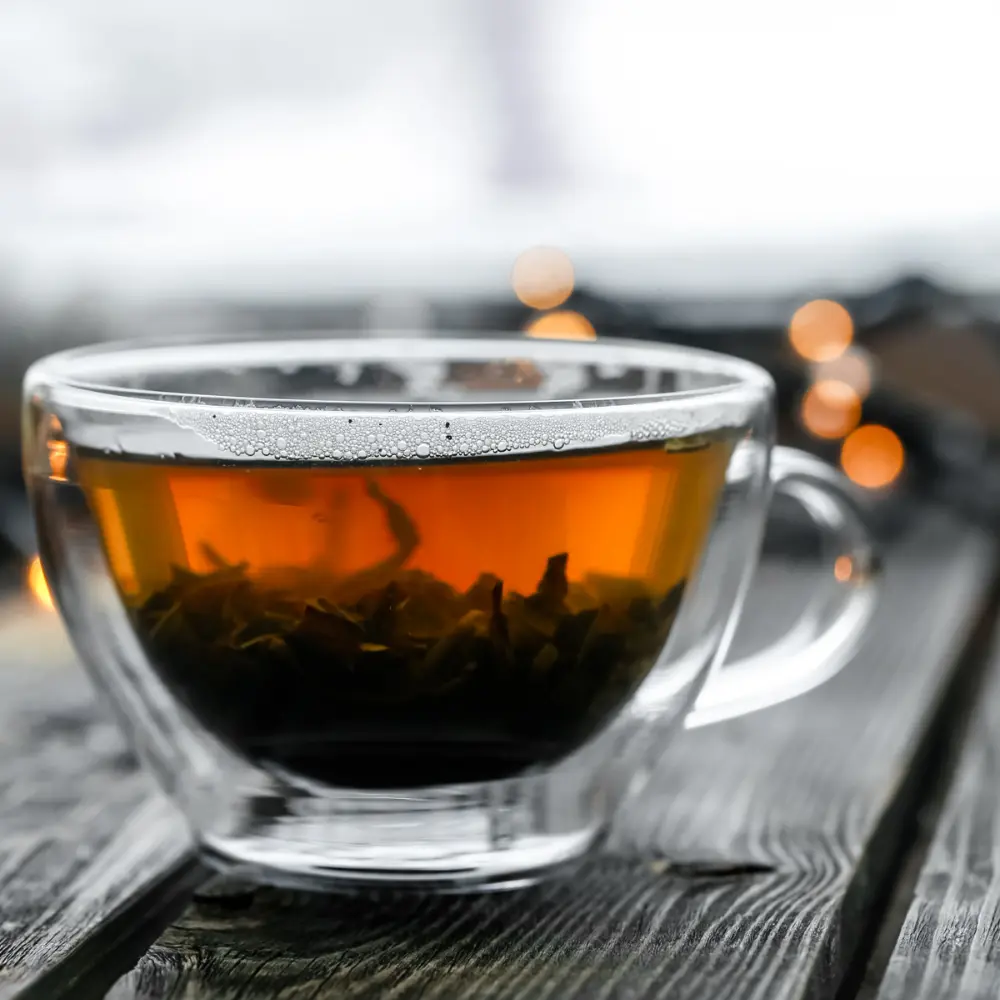
During the steeping process, an array of complex chemical changes occur that help define the taste and aroma of your brew.
- Tea: When you steep tea, the hot water acts as a solvent, breaking down the cellular structure of the tea leaves and releasing a wide range of chemical compounds. These include polyphenols (responsible for bitterness and astringency) (2), flavonoids (providing color and flavor), and caffeine.
- Coffee: Similar to tea, steeping this beverage involves the dissolution of chemical compounds from the grounds into the water. Among these compounds are acids (which provide some of the tanginess and fruitiness), oils (responsible for the body and richness), and of course, caffeine.
In essence, whether you’re steeping coffee or tea, the process is a delicate dance of extraction and solubility, creating a rich symphony of flavors in your cup.
The Benefits of Steeping Coffee
The steeping process in coffee preparation isn’t just about getting your caffeine fix. It’s a nuanced and gratifying ritual that invites you to slow down, offering a unique depth of flavor and experience. Steeping coffee can yield several benefits that might surprise even seasoned coffee aficionados.
Highlighting Flavors and Aromas
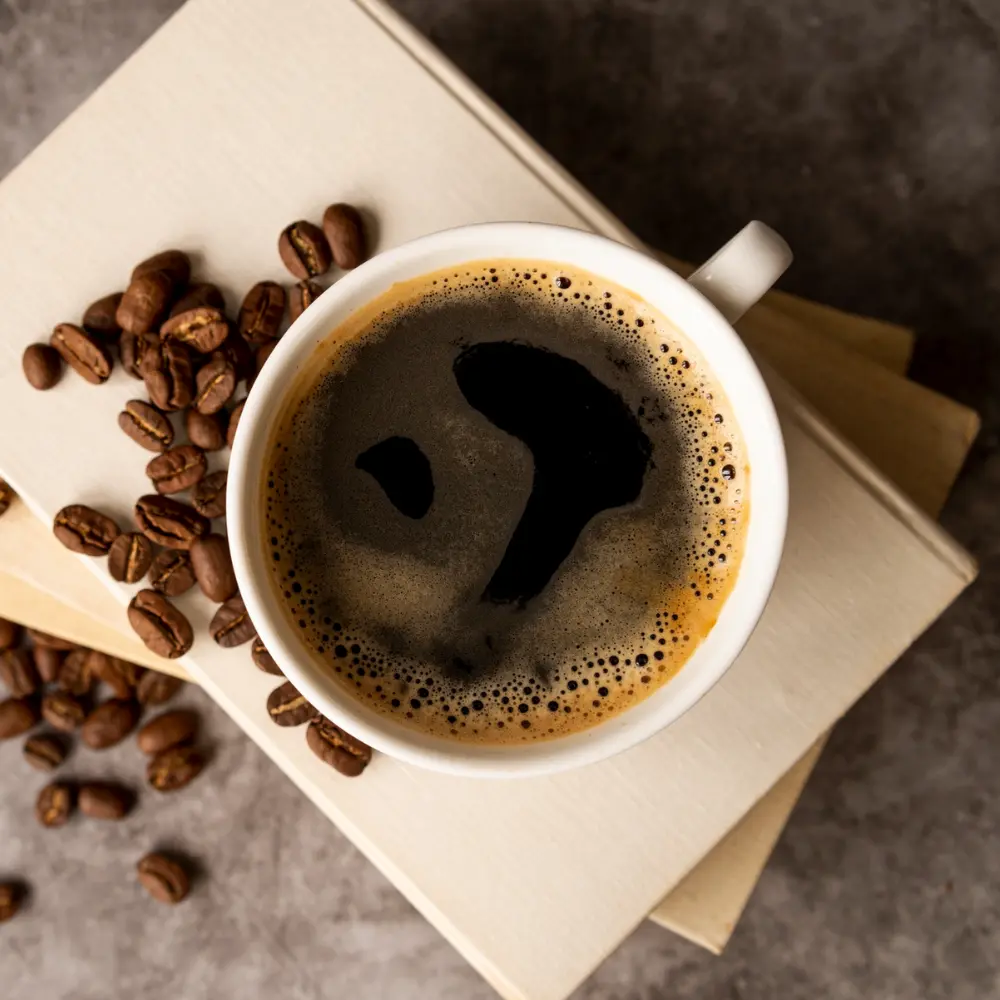
One of the primary advantages of steeping coffee is the enhancement of flavors and aromas. This brewing method allows the grounds to soak in hot water for a longer period, thoroughly extracting the flavors and volatile compounds responsible for the coffee’s aroma.
- Flavor Profile: By steeping coffee, you can achieve a more robust and complex flavor profile compared to conventional brewing methods. You’re likely to discover subtle flavor notes that you might miss in a hastily brewed coffee.
- Aroma: Since the aroma compounds have enough time to dissolve into the water during steeping, you’ll find your coffee’s scent to be more intense and satisfying. This can significantly elevate your experience, as aroma is a major part of our perception of taste.
Enhanced Antioxidant Content
Beyond the gustatory pleasure, steeping coffee may also offer health benefits. This lovely beverage is known to contain several antioxidants, and the steeping method can help maximize their extraction.
- Rich in Antioxidants: Research indicates that coffee is a major source of antioxidants in the Western diet. These beneficial compounds help neutralize harmful free radicals in the body, potentially protecting against various diseases.
- Optimal Extraction: The prolonged contact between water and coffee grounds during steeping allows for optimal extraction of these antioxidants, possibly making your cup of joe more beneficial to your health.
Reducing Acidity in Coffee

If you’re someone who loves coffee but struggles with its acidity, steeping might be your ideal brewing method.
- Lower Acidity: Steeping coffee generally results in a brew with lower acidity compared to fast brewing methods like espresso. This is particularly beneficial for people who have a sensitive stomach or suffer from conditions like acid reflux.
- Smooth Taste: Not only is steeped coffee gentler on the stomach, but it also tends to have a smoother taste. This is due to the reduced acid levels, which can sometimes give the coffee a sharp or sour edge.
To sum up, the steeping method in coffee preparation not only helps emphasize the sensory attributes of the beverage, like flavor and aroma but also increases the health benefits by enhancing the antioxidant content and reducing acidity.
Methods of Coffee Steeping
When it comes to the art of steeping coffee, there is more than one way to brew. Different steeping methods allow for various levels of control over the brewing process, impacting the flavor, aroma, and strength of your cup of joe. Here, we will explore three popular methods: immersion brewing using a French press, cold brew coffee, and the pour-over steeping technique.
Immersion Brewing: French Press
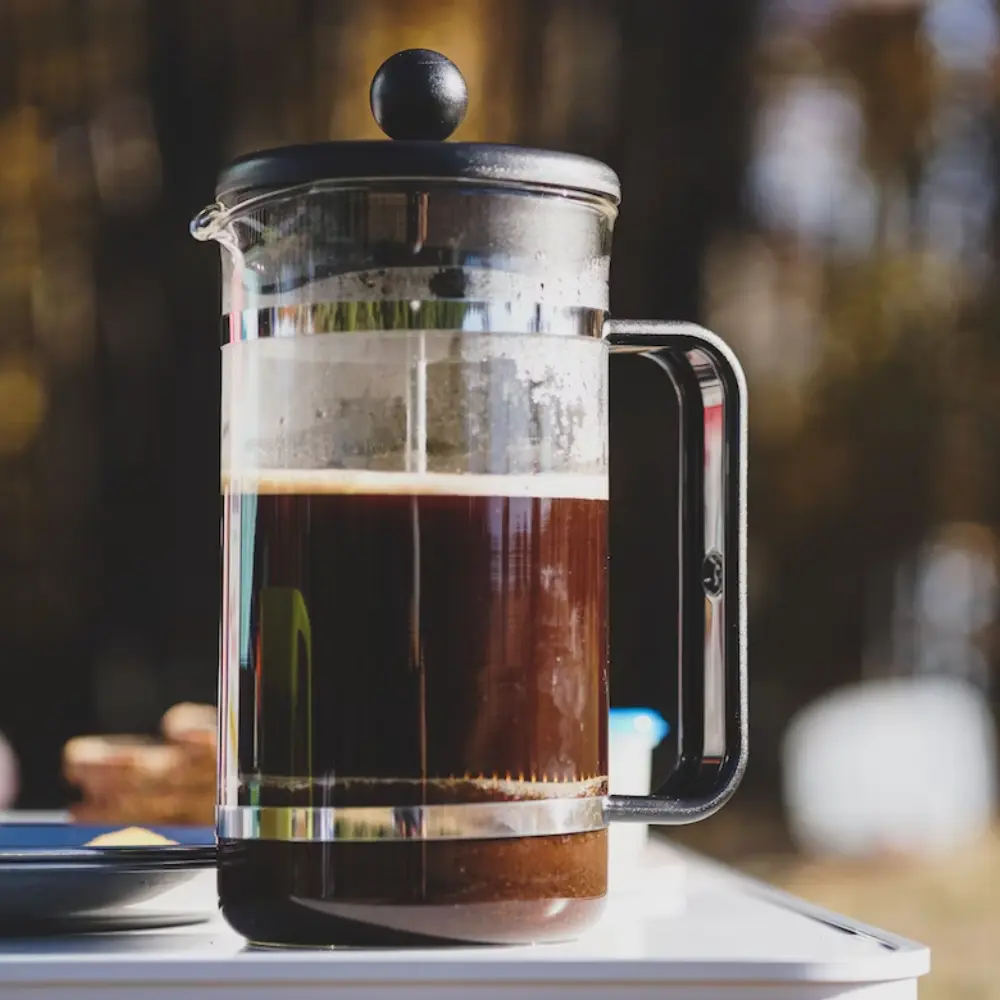
The French press, also known as a press pot or plunger pot, is one of the most common and straightforward methods for steeping coffee. Here’s how you can do it:
- Start with a coffee-to-water ratio of about 1:15. This means for every gram of coffee, you’ll use 15 grams (or milliliters) of water.
- Add coarsely ground coffee to your French press.
- Pour hot water (just off the boil, around 200°F or 93°C) over the coffee grounds.
- Stir the grounds and water mixture gently to ensure all grounds are wet and extraction is even.
- Let the mixture steep for about 4 minutes. Adjusting the steeping time can help fine-tune your brew’s strength and flavor, so you might wonder how long to steep coffee in a French press. For a stronger brew, you can steep for up to 5 minutes, but be careful not to over-extract, which can result in a bitter flavor.
- Slowly press the plunger down to separate the grounds from the water, and serve immediately.
Cold Brew Coffee: Slow Steeping at Low Temperatures

Cold brew coffee is a unique method that involves steeping coffee in cold or room temperature water over a prolonged period, usually 12 to 24 hours. This slow steeping at low temperatures results in a coffee concentrate that can be diluted with water or milk to taste. The cold brew method is known for producing a smooth, low-acid, and highly caffeinated cup of joe.
- Begin by using a coffee-to-water proportion of 1:4 to achieve a potent concentrate.
- Combine coarsely ground coffee with cold or room-temperature water in a jar or pitcher.
- Gently stir to ensure that all the coffee is moistened.
- Cover the container and allow it to steep in the refrigerator for 12 to 24 hours.
- Remove the grounds by straining the mixture through a fine-mesh sieve or a coffee filter. Enjoy it cold or over ice.
Interested in Cold Brewing? Discover the Cold Brew Drip Tower, an elegant and efficient apparatus that delivers smooth and refreshing cold brew coffee with precision and style.
The Pour-Over Steeping Technique

The pour-over brewing method is another popular way to prepare steeped coffee. This technique requires more attention and precision but is renowned for highlighting intricate flavors and aromas.
- Place a coffee filter in a pour-over brewer (like a Chemex or Hario V60) and wet it with hot water. This preheats the brewer and gets rid of any paper flavor from the filter.
- Add medium-fine ground coffee to the filter. The coffee-to-water ratio should be about 1:16.
- Pour just enough water (around twice the weight of the coffee) over the grounds to wet them evenly. Let the coffee “bloom” for 30-45 seconds. This step allows gases to escape from the coffee, ensuring even extraction.
- Slowly pour the rest of the water over the grounds in a circular motion, starting from the middle and moving outwards. The total brew time, including the coffee bloom, should be around 2.5 to 3 minutes.
Each of these steeping methods offers a distinct taste and experience, and the best one for you ultimately depends on your personal preference. Regardless of the method you choose, the beauty of steeping coffee lies in the journey as much as the destination – the delicious cup of joe that awaits at the end.
Tea Steeping vs. Coffee Steeping: A Comparative Analysis
The art of steeping is as old as the hills, and both tea and coffee have a long-standing history with it. However, the methods, impact, and results differ significantly between steeping tea and steeping coffee. By comparing these two beloved beverages and their steeping techniques, we can glean unique insights into how this method influences their individual characteristics and flavor profiles.
Varieties of Tea Steeping Techniques
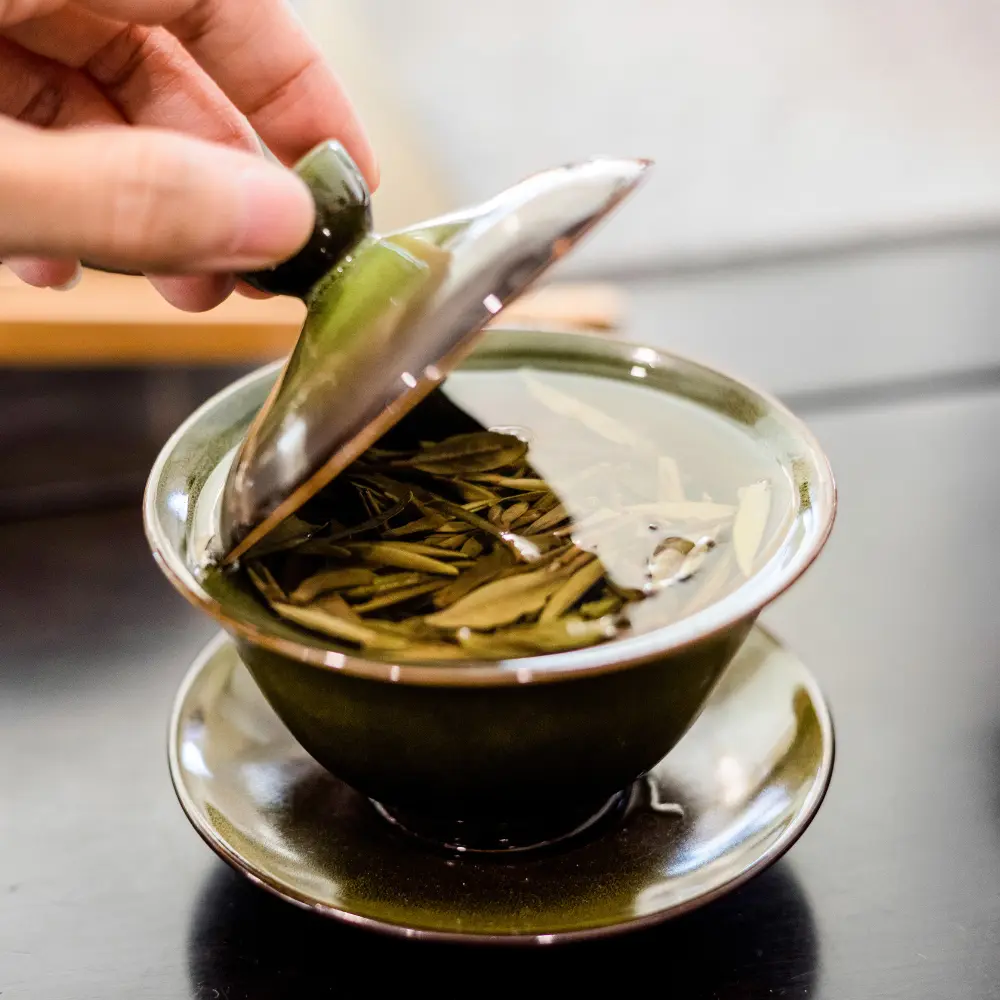
The art of tea steeping involves a fascinating variety of techniques, some of which have been honed over centuries. Each method aims to extract the optimal flavor, aroma, and benefits from the tea leaves.
- Gongfu Cha: This Chinese technique uses a high leaf-to-water ratio and multiple short steeping times to extract a wide range of flavors from the tea.
- Western Steeping: The typical method in the West involves steeping tea in a pot or a mug with a lower leaf-to-water ratio and a longer steeping time. This method is more convenient, though it might not bring out the full complexity of high-quality teas.
- Cold Brew Tea: Similar to cold brew, this method involves steeping tea leaves in cold water for several hours. The result is a refreshing, mild brew with less bitterness and astringency.
Understanding the Role of Tea Types in Steeping
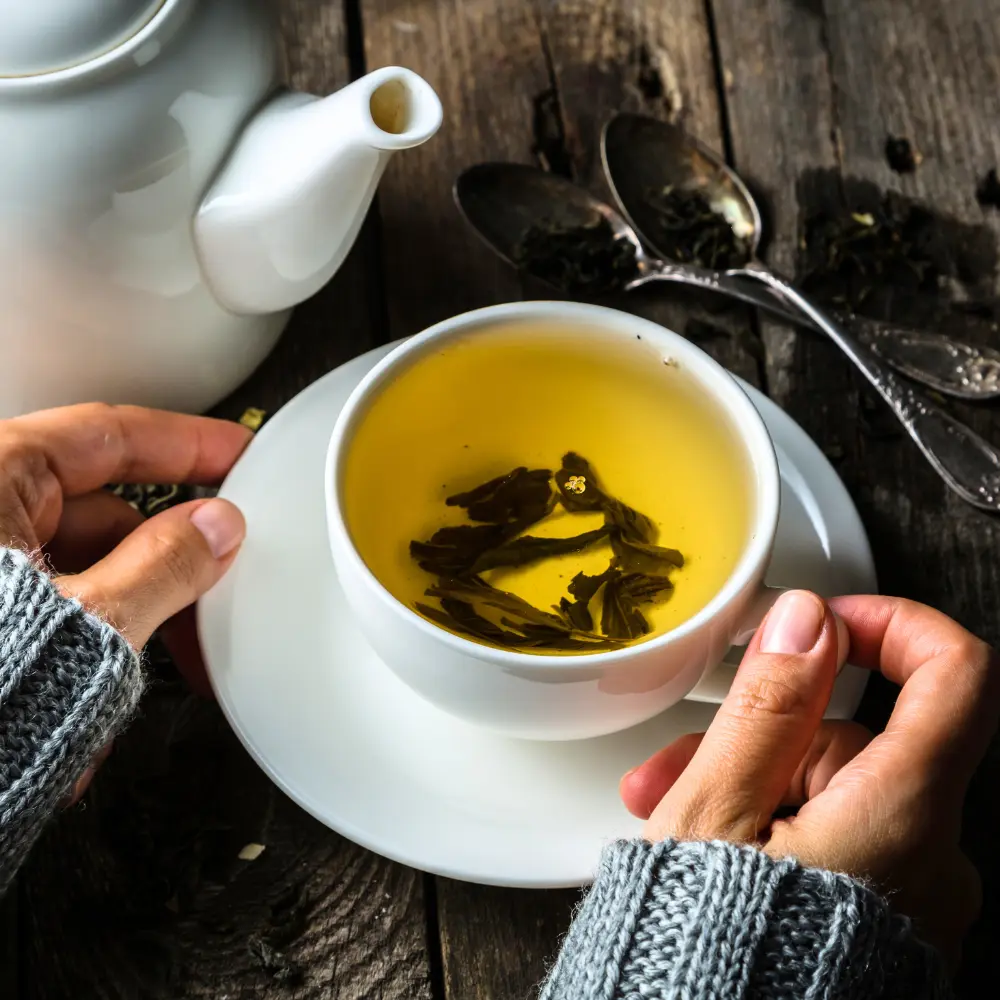
When steeping tea, it’s crucial to consider the type of tea you’re using. Different teas require varying water temperatures and steeping times to extract the best flavors without causing bitterness or astringency.
- Green Tea: Green tea is delicate and can easily become bitter. It’s typically steeped in water at 160-175°F (70-80°C) for 1-2 minutes.
- Black Tea: Black tea is more robust and can withstand higher temperatures and longer steeping times. It’s usually steeped in boiling water for 3-5 minutes.
- Oolong Tea: Oolong tea falls between green and black tea in terms of oxidation. It’s steeped in water at 185-205°F (85-95°C) for 2-3 minutes.
Examining Coffee’s Potential for Steeping
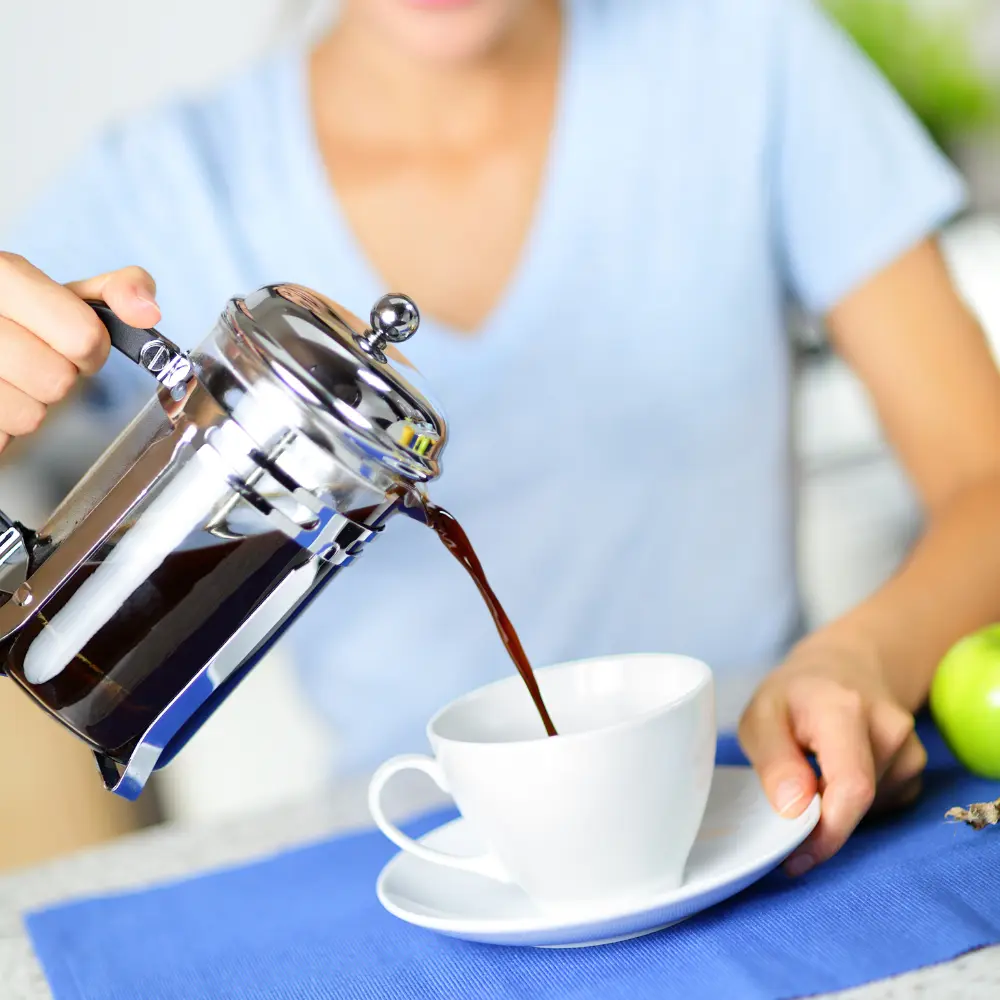
Steeping coffee is less traditional but no less rewarding. With its various brewing methods and immense flavor potential, coffee proves to be an exciting contender in the realm of steeping.
- Immersion Brewing: Steeping coffee in a French press or similar devices allows for full immersion brewing. This method extracts a wide range of flavors and compounds from the coffee, resulting in a rich and full-bodied brew.
- Cold Brew Coffee: As mentioned before, cold brewing involves steeping coffee grounds in cold water for 12 to 24 hours. The result is a concentrate that’s smooth, low-acid, and highly caffeinated.
- Pour-Over Steeping: While it’s not strictly a steeping method, the pour-over technique involves a brief period of steeping during the bloom phase. This step helps to ensure even extraction and brings out the more delicate flavors of the coffee.
From steeping tea in intricate Gongfu ceremonies to brewing a simple yet delicious French press, steeping is a versatile and rewarding method to explore the nuances of tea and coffee alike. Whether you prefer to steep coffee or indulge in the ritual of steeping tea, there’s a world of flavors and experiences to discover.
Exploring Creative Coffee-Tea Blends
In the realms of tea and coffee, creativity is abundant. Baristas and tea enthusiasts alike constantly innovate and experiment, leading to some truly delightful combinations of these two beloved beverages. If you’re intrigued by the idea of a coffee-tea fusion, or if you’re wondering how steeping coffee might open doors to new flavors, let’s dive into the world of coffee-tea blends.
Coffee-Tea Fusion Drinks
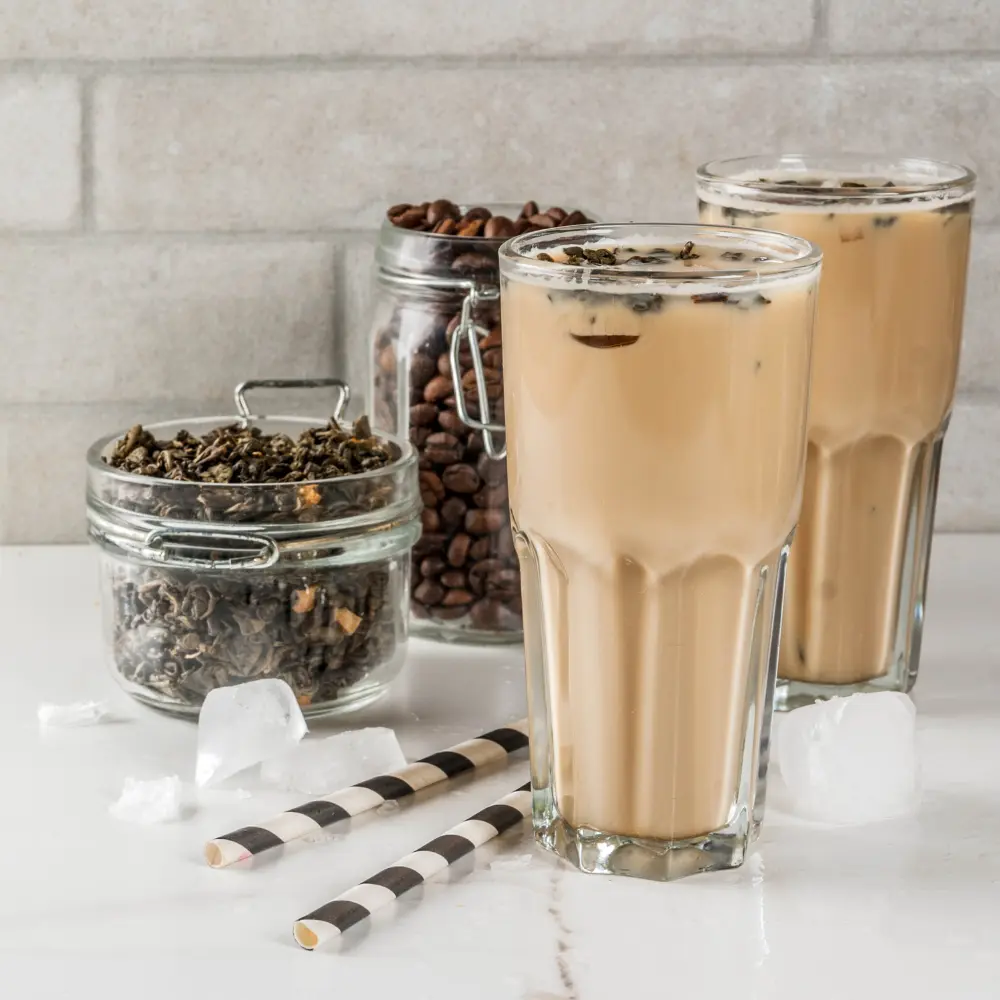
The fusion of coffee and tea isn’t just an abstract idea; it has materialized in some interesting and flavorful drinks across various cultures.
- Yuenyeung: This popular beverage in Hong Kong combines coffee and tea in a single cup. The blend is usually made with black tea, coffee, and sweetened condensed milk. Each ingredient contributes to a complex flavor profile that’s sweet, bitter, and aromatic all at once. (3)
- Dirty Chai Latte: A trendy drink in many cafes, a dirty chai latte is essentially a chai tea latte with a shot of espresso. The result is a flavorful, caffeine-fueled drink with a blend of aromatic spices, tea, and coffee.
- Black Tie: Originated in Southeast Asia, a Black Tie consists of a blend of Thai iced tea and a double shot of espresso, sweetened condensed milk, and topped with cream.
Infused Coffee with Tea Flavors
You don’t have to go to a specialty cafe to enjoy a fusion of coffee and tea. With some creativity and a bit of experimentation, you can steep coffee at home while infusing it with your favorite tea flavors.
- Tea-Infused Coffee: To prepare a tea-infused coffee, start by steeping a strong flavored tea, like chai or Earl Grey, in hot water. Once steeped to your liking, use this tea to brew your coffee. The result is a unique blend where coffee meets tea, offering the best of both worlds.
- Coffee-Tea Cold Brew: In a cold brew setting, you could add a couple of tea bags to your grounds before adding water. The slow steeping process will extract the tea’s flavor along with the coffee’s, creating a uniquely refreshing brew.
Innovative Recipes: Coffee-Tea Infused Desserts

Coffee and tea aren’t just for drinking. Their flavors can also be incorporated into a variety of desserts, adding depth and complexity to sweet treats.
- Coffee-Tea Ice Cream: By steeping coffee and tea together in a cream base, you can create a flavorful ice cream that’s sure to impress.
- Coffee-Tea Tiramisu: Tiramisu traditionally uses coffee, but by steeping it with a tea like Earl Grey, you can add an unexpected twist to this classic Italian dessert.
- Coffee-Tea Infused Cakes: Add a brewed coffee-tea blend to your cake batter for an enriched flavor. Coffee and tea can both enhance the depth and richness of chocolate, making them great additions to chocolate cakes and brownies.
By creatively blending tea and coffee, we can discover new taste profiles that challenge the norms and excite our palates. These fusion recipes are not only a testament to the versatility of these two beverages but also a celebration of the exploration and creativity inherent in the art of steeping. So go ahead, steep coffee, mix, match, experiment, and most importantly, enjoy the journey and the flavors it brings.
So, Can You Steep Coffee Like Tea? – Conclusion
The process of steeping holds an exceptional charm in the realm of hot beverages. Not only does it introduce a unique depth of flavor and aroma, but it also opens the door to creativity and experimentation. The question, “Can You Steep Coffee Like Tea?” can be answered with a resounding yes. As we’ve discovered throughout this journey, steeping coffee offers an abundance of possibilities, with each method serving as an avenue to explore the intricate depths and characteristics of our favorite beans.
Whether you’re a tea lover curious about the coffee world or a coffee enthusiast looking for a new brewing adventure, the art of steeping offers a shared ground. From understanding the underlying science and unique benefits to exploring the variety of steeping methods and innovative coffee-tea blends, we hope this article has shed light on the fascinating universe that unfolds when steeping coffee.
At the end of the day, the magic of steeping lies in the personal experiences and joy that come from each cup. So, whether you’re brewing a pot of tea or steeping a fresh batch of coffee, savor the process and the delicious outcomes it yields. Happy steeping!
FAQ
What is the ideal steeping time for coffee and tea?
Coffee is ideally steeped for 4-5 minutes in a French press, while steeping times for tea vary, ranging from 1 minute for delicate green teas to 5 minutes for robust black teas.
Can cold brew coffee be steeped for too long?
Yes, if the cold brew is steeped for too long (over 24 hours), it can become over-extracted and taste bitter.
How does coffee steeping affect caffeine content?
Steeping coffee for longer can extract more caffeine, but it can also lead to over-extraction and bitterness.
Are there any health benefits to steeping coffee like tea?
Yes, steeping coffee can enhance its antioxidant content, reduce acidity, and potentially create a smoother and more easily digestible brew.
















